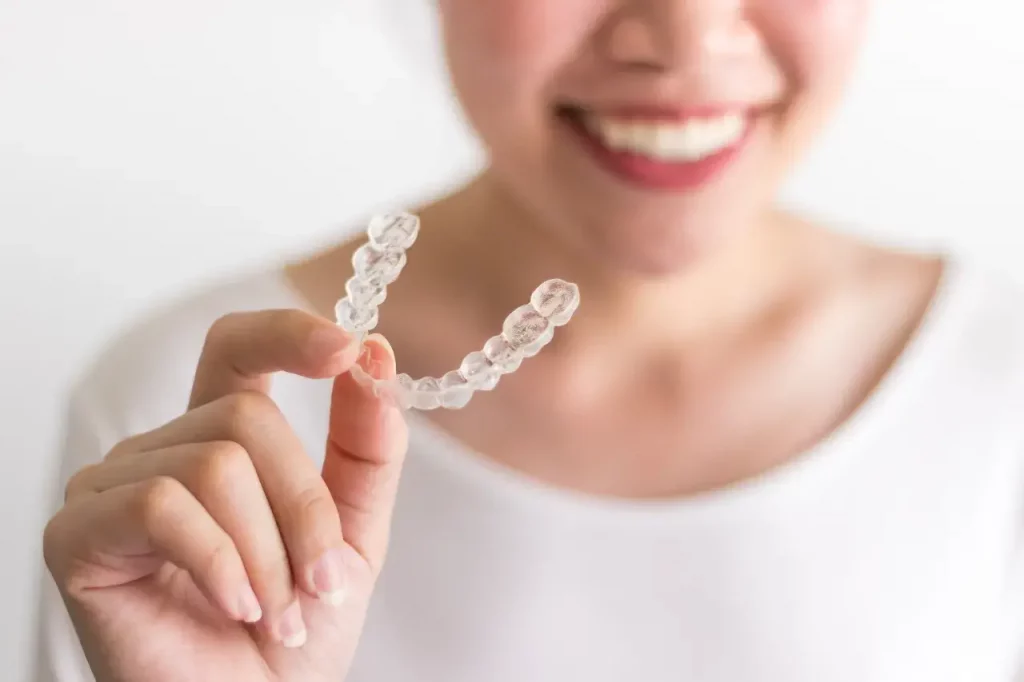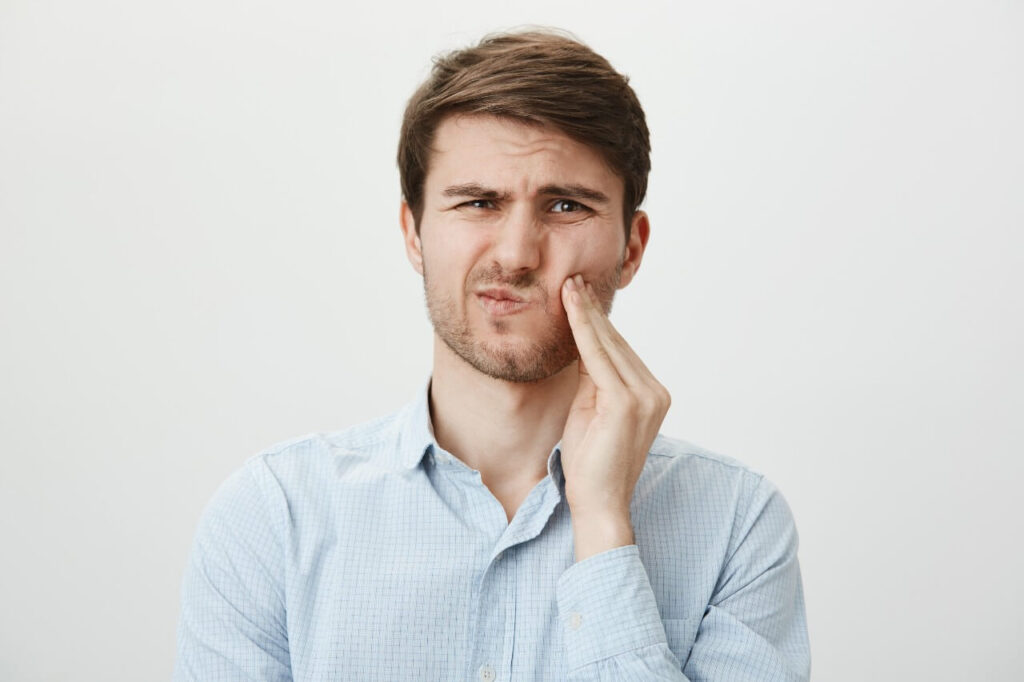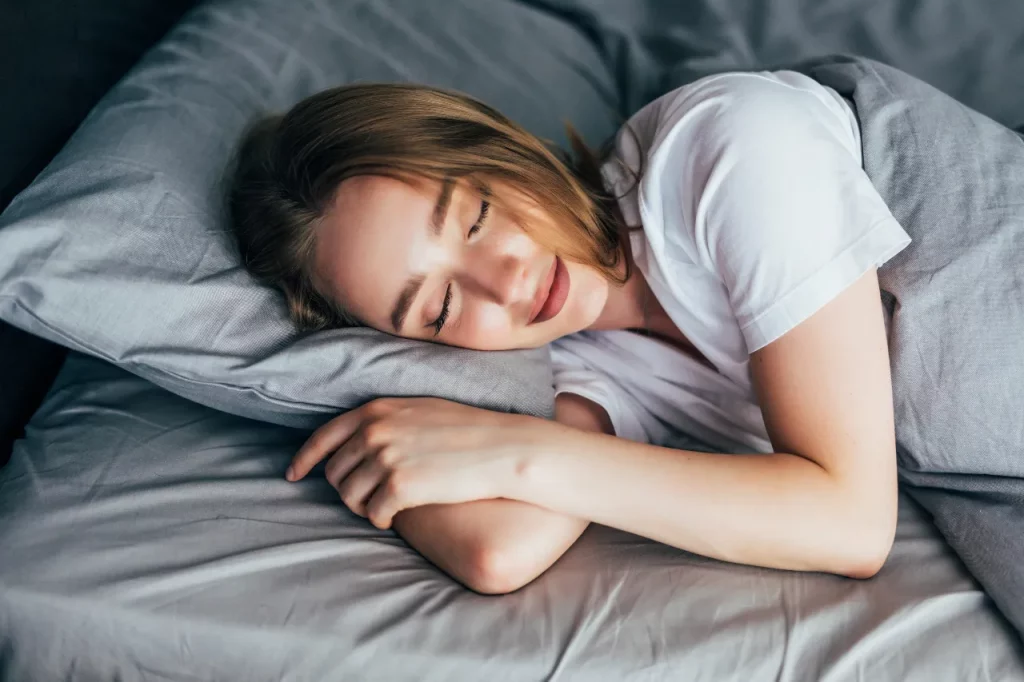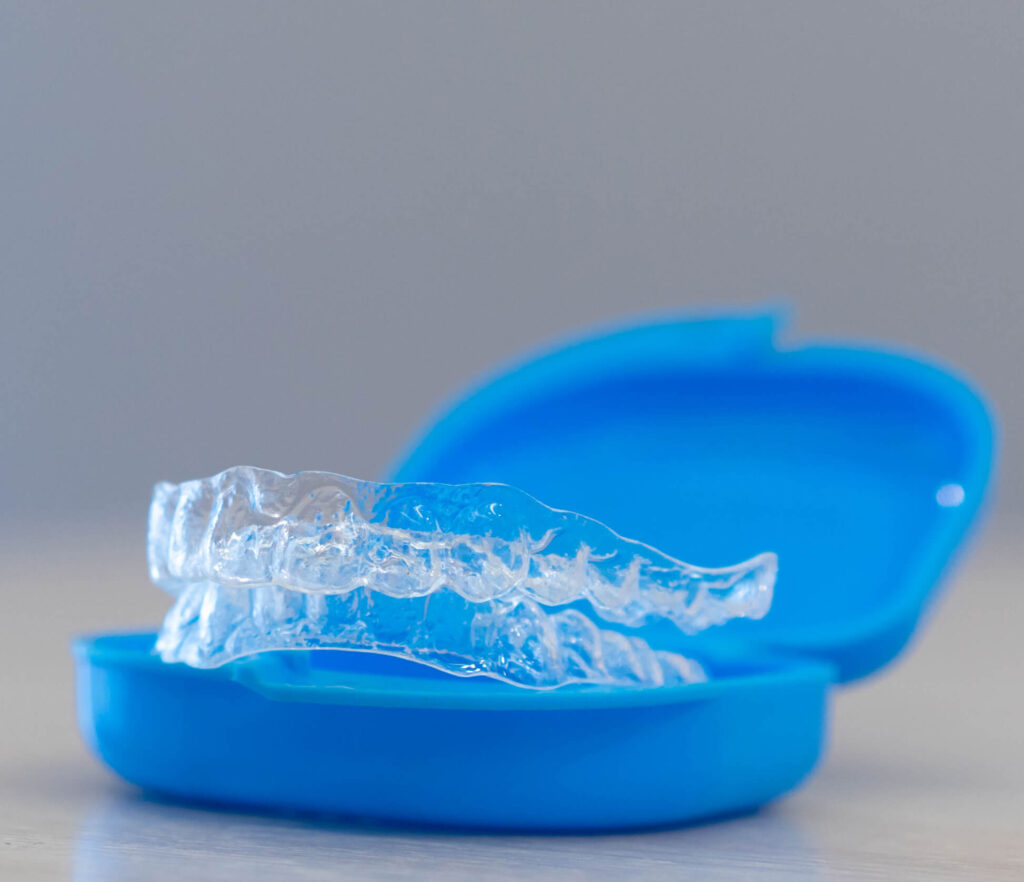You might not know it, but you could be putting your teeth at risk every night. Most of us don’t realize how much damage we can do while sleeping. If you grind your teeth, a guard can help alleviate some of the problems and prevent further damage to your teeth and gums. See how and why millions of Americans use night guards to help them get a more peaceful night’s rest while protecting their teeth.


Night guards can be bought over the counter or be custom-made by your dentist. Night guards are also known as occlusal guards or dental appliances and are used to protect teeth from damage resulting from clenching and grinding during sleep. Night guards prevent headaches, damaged teeth, TMJ disorder, and gum recession. Here are some common signs of sleep bruxism.
A dental night guard is a valuable asset for protecting your teeth from the adverse effects of teeth grinding or clenching. Here are some of the many benefits of wearing a custom night guard, and why your dentist may recommend a dental guard to prevent future damage.
One of the most common sleep behaviors, bruxism (teeth grinding), can cause many dental problems for your teeth without your knowledge. While you don’t have much control over grinding at night, you can help prevent sensitive teeth by wearing night guards. The dental night guard will reduce your enamel loss and the sensitivity of your teeth.
Regularly grinding your teeth can also damage and wear away your existing fillings, exposing the sensitive tooth structure beneath. You will have to go back to your dentist, who may have to replace or repair the damaged fillings. Similarly, you may grind hard enough to break or chip a tooth. Wearing a mouth guard at night acts as a barrier by protecting the biting surfaces of your teeth.
When you clench or grind your teeth during sleep, the overnight wear can eventually lead to headaches and tightness in the jaw area, specifically on the joint called the temporomandibular joint (TMJ). Tension in the TMJ is referred to as temporomandibular joint dysfunction or temporomandibular disorder (TMD). If this happens, it is important to see a dentist who can make a nighttime dental appliance that keeps your jaw and teeth lined up properly while you sleep.
Wearing a night guard can reduce jaw pain caused by TMD. The dental prosthetic is made specifically for your mouth, so it fits comfortably and lightly in your mouth. When wearing a night guard, it keeps your jaw joints and muscles from becoming tense during the night, which allows your jaw to relax.
If you’re having chronic headaches in the morning, it could be that you’re grinding your teeth or clenching your jaw while you sleep. The grinding and clenching of the teeth put pressure on the jaw, ears, and head. People who grind their teeth often wake up with a headache or have associated neck pain in the morning. Using a night guard, these headaches will likely be reduced in intensity or disappear altogether, as the pressure on your teeth and jaw is relieved.
Bruxism and TMJ dysfunction can strain the muscles in your jaw and make it uncomfortable to sleep. This can affect your ability to sleep soundly, reducing the quality of your sleep. When you wear a dental appliance like a night guard, it keeps your jaw from moving, which relaxes the muscles around your jaw; as a result, you will enjoy a more restful sleep.

If you value your teeth, then you will also be mindful of your money. Grinding of your teeth and jaw clenching can have a devastating impact on your teeth, and the effects are only exacerbated by time. If you notice any signs of teeth grinding, it’s best to stop it as soon as possible with a night guard to prevent future dental issues. If you are able to stop this behavior in its early stages, you’ll save yourself a lot of money later on, and in severe cases, even prevent tooth loss.
If you clench your jaw while sleeping, it increases the risk of snoring, which keeps you from breathing well. When wearing a night guard, it creates a narrow passage between your top and lower teeth for an increase in airflow, thereby eliminating snoring for many people. This improves your sleep quality, but your sleeping partner will significantly benefit from it as well.
Custom-made – The dentist will take an impression of your teeth and send it to a lab, where a custom-fitted night guard will be fabricated for you. This process takes a couple of weeks, but the wait is worth the wait as the fit will be comfortable and fit right. Your dentist will recommend one of the many different types of night guards for teeth clenching, depending on how severe your condition is. A softer, more rubbery night guard might be best for light clenchers; a hard hybrid night guard for severe teeth grinding. Your dentist may recommend an upper or lower night guard, based on specific aspects of your mouth, such as whether you have any dental work, your personal preference, and the shape of your mouth.
Over-the-counter – Two different types of over-the-counter night guards are available on the market today: “boil and bite,” and one size fits all. The one size fits all might fit your teeth well, but it won’t be a secure fit compared to a custom-made night guard.
The boil and bite night guards are custom-fitted to your teeth. To custom fit your boil and bite night guard, you boil hot water to get the night guard soft. Once it’s ready, you place it in your mouth and bite down while it is still soft. As the guard cools, it will harden to form an impression of your teeth. They form a much better fit than one-size-fits-all mouth protectors and also provide more comfort, but they aren’t as secure as a custom mouth guard and are generally a little bulkier.
Whether you choose custom guard or over-the-counter night guards, if you experience any of the symptoms mentioned, or notice unusual excessive enamel wear, speak to your dentist about your concern. From there, decide whether a custom-made night guard is worth the investment or not.

People often don’t think about links between jaw muscle, joint pains, facial pain, neck pain, and TMD. But it’s important to be aware of the symptoms we’ve listed above. If you believe you may be suffering from teeth grinding or jaw clenching, feel free to contact us today. We’ll help you end these habits before they cause severe damage.
If you have any questions about TMJ disorder, bruxism, tooth damage, or have any other questions about how we can improve your oral health, call us at 972-468-1440 today to schedule your consultation with Dr. Feng.
Our dental office is located in Fairview, Texas, and our patients visit us from across the surrounding areas, including Allen, Plano, McKinney, and Lucas, for dental care.
We firmly believe that the internet should be available and accessible to anyone, and are committed to providing a website that is accessible to the widest possible audience, regardless of circumstance and ability.
To fulfill this, we aim to adhere as strictly as possible to the World Wide Web Consortium’s (W3C) Web Content Accessibility Guidelines 2.1 (WCAG 2.1) at the AA level. These guidelines explain how to make web content accessible to people with a wide array of disabilities. Complying with those guidelines helps us ensure that the website is accessible to all people: blind people, people with motor impairments, visual impairment, cognitive disabilities, and more.
This website utilizes various technologies that are meant to make it as accessible as possible at all times. We utilize an accessibility interface that allows persons with specific disabilities to adjust the website’s UI (user interface) and design it to their personal needs.
Additionally, the website utilizes an AI-based application that runs in the background and optimizes its accessibility level constantly. This application remediates the website’s HTML, adapts Its functionality and behavior for screen-readers used by the blind users, and for keyboard functions used by individuals with motor impairments.
If you’ve found a malfunction or have ideas for improvement, we’ll be happy to hear from you. You can reach out to the website’s operators by using the following email
Our website implements the ARIA attributes (Accessible Rich Internet Applications) technique, alongside various different behavioral changes, to ensure blind users visiting with screen-readers are able to read, comprehend, and enjoy the website’s functions. As soon as a user with a screen-reader enters your site, they immediately receive a prompt to enter the Screen-Reader Profile so they can browse and operate your site effectively. Here’s how our website covers some of the most important screen-reader requirements, alongside console screenshots of code examples:
Screen-reader optimization: we run a background process that learns the website’s components from top to bottom, to ensure ongoing compliance even when updating the website. In this process, we provide screen-readers with meaningful data using the ARIA set of attributes. For example, we provide accurate form labels; descriptions for actionable icons (social media icons, search icons, cart icons, etc.); validation guidance for form inputs; element roles such as buttons, menus, modal dialogues (popups), and others. Additionally, the background process scans all of the website’s images and provides an accurate and meaningful image-object-recognition-based description as an ALT (alternate text) tag for images that are not described. It will also extract texts that are embedded within the image, using an OCR (optical character recognition) technology. To turn on screen-reader adjustments at any time, users need only to press the Alt+1 keyboard combination. Screen-reader users also get automatic announcements to turn the Screen-reader mode on as soon as they enter the website.
These adjustments are compatible with all popular screen readers, including JAWS and NVDA.
Keyboard navigation optimization: The background process also adjusts the website’s HTML, and adds various behaviors using JavaScript code to make the website operable by the keyboard. This includes the ability to navigate the website using the Tab and Shift+Tab keys, operate dropdowns with the arrow keys, close them with Esc, trigger buttons and links using the Enter key, navigate between radio and checkbox elements using the arrow keys, and fill them in with the Spacebar or Enter key.Additionally, keyboard users will find quick-navigation and content-skip menus, available at any time by clicking Alt+1, or as the first elements of the site while navigating with the keyboard. The background process also handles triggered popups by moving the keyboard focus towards them as soon as they appear, and not allow the focus drift outside of it.
Users can also use shortcuts such as “M” (menus), “H” (headings), “F” (forms), “B” (buttons), and “G” (graphics) to jump to specific elements.
We aim to support the widest array of browsers and assistive technologies as possible, so our users can choose the best fitting tools for them, with as few limitations as possible. Therefore, we have worked very hard to be able to support all major systems that comprise over 95% of the user market share including Google Chrome, Mozilla Firefox, Apple Safari, Opera and Microsoft Edge, JAWS and NVDA (screen readers), both for Windows and for MAC users.
Despite our very best efforts to allow anybody to adjust the website to their needs, there may still be pages or sections that are not fully accessible, are in the process of becoming accessible, or are lacking an adequate technological solution to make them accessible. Still, we are continually improving our accessibility, adding, updating and improving its options and features, and developing and adopting new technologies. All this is meant to reach the optimal level of accessibility, following technological advancements. For any assistance, please reach out to